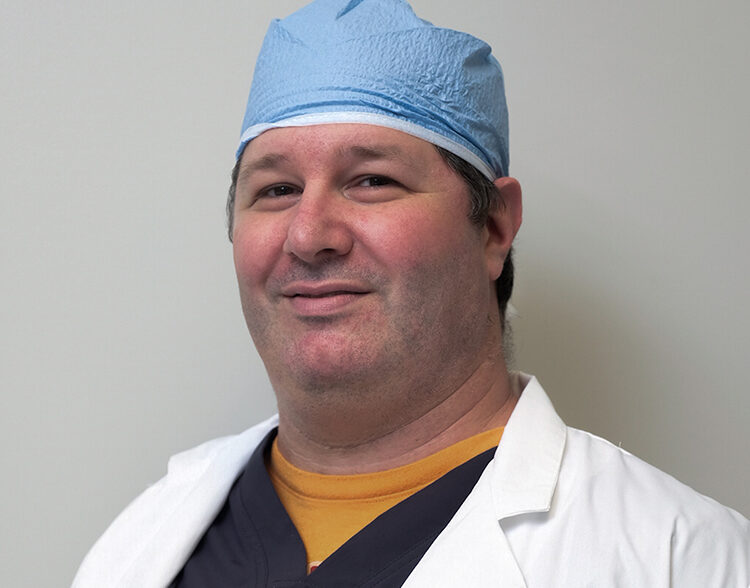
If you are a man over the age of 50, chances are you already have or will soon be developing an enlarged prostate. It’s simply a natural part of aging. But at some point, it can lead to an uncomfortable condition called benign prostatic hyperplasia (BPH).
The good news is that BPH isn’t prostate cancer and doesn’t make you more likely to get it. And there are a lot of treatments for BPH, from lifestyle changes to medication to surgery.
“An enlarged prostate is a naturally occurring phenomena and any male that lives long enough will eventually have it,” Dr. Justin Muskovich, a urologist with HCA Florida Lawnwood Hospital, explained. “It occurs in response to the testosterone production through our lifetime.
“Our urethra, the tube that carries urine out of our penis, runs right through the center of our prostate, so as the prostate grows in a natural fashion it starts to clog. The way we feel prostate enlargement is through our bladder. It’s like taking a garden hose that flows freely and squeezing it. You have to put more pressure on it to release the same amount of water.
“Our bladders work the same way. When that blockage occurs, our bladder muscles have to generate more strength and the bladder will end up growing thicker which will cause spasticity and irritation. Left untreated, BPH can cause urinary tract infections, bladder or kidney damage, bladder stones and incontinence.”
Obstructive symptoms of BPH include having trouble starting to urinate or having to stop and restart repeatedly; having to strain or push when you urinate; and having a weak urine stream.
BPH symptoms caused by changes in the bladder include feeling an urgency to urinate; a high frequency of urination; the feeling that even after you go, you feel as though your bladder is not empty; and waking up often in the night to relieve yourself.
“The main reason to treat BPH is to protect the bladder long term,” Dr. Muskovich said. “As the prostate gets larger, the treatment gets more involved. With that said, the overall size of the prostate doesn’t necessarily correlate to how severe the symptoms are. I’ve seen small prostates with big problems and large prostates with no problems. The treatment, however, is based on the size.”
While some lifestyle changes such as drinking less caffeine and alcohol, and fewer liquids before bedtime may ease some of the symptoms, there are medications and minimally invasive options that may be more effective.
Minimally invasive options include:
- Rezum water vapor therapy, which injects steam into the prostate gland causing death of the excess prostate tissue.
- Transurethral microwave therapy, which uses microwave heat to kill off excess prostate tissue.
- Laser treatments that vaporize excess prostate tissue by shooting laser energy from the inside of the prostate.
- Transurethral resection, which removes all but the outer part of the prostate by cutting and shaving pieces of the prostate with a scope.
“The problem with some of these procedures is that the nerves that control sexual orgasms, erectile function and ejaculations run right outside the prostate, so any procedure that uses heat energy has the potential to pass that energy to those nerves,” Dr. Muskovich continued. “Heat damages nerves and some of these procedures have the potential to interfere with sexual function.”
If the prostate is too big for the treatments listed above, a surgical procedure called a prostatectomy can be performed using either open or robotically assisted surgical techniques to cut out the excess prostate tissue.
But now there is another option.
“Rather than doing open surgery for very large prostates, there is a new technique called robotic aquablation therapy, which uses heat-free, high-pressure jets of water to remove prostate tissue. While a simple prostatectomy might take two hours under general anesthesia, this procedure can get the same results in about five minutes. Plus, it has zero impact on erectile function, orgasmic function and sexual desire.”
Aquablation therapy is the only procedure that uses a cystoscope (a camera that goes through the urethra into the bladder) in combination with ultrasound imaging to enable the surgeon to see the entire prostate (from the inside of the prostate) during surgery.
Using ultrasound to map the prostate, the robot system comes up with the treatment. It shows where to spray the water and how much tissue to remove, and monitors it in real time.
It is also designed so that when it gets near the muscles controlling sexual functions it alters the way it works to preserve ejaculatory function.
“We are the first hospital in central Florida and the first HCA facility on either of the coasts in this country to have this machine,” Dr. Muskovich said proudly.
“For HCA to invest so heavily in this advanced technology is an amazing resource for people in this area. With aquablation therapy we have the ability to accurately reproduce results and take human error out of the equation. As confident as I am in my surgical skills, I know I will not do as well as a highly fine-tuned machine.”
Dr. Justin Muskovich received his medical degree and completed his surgical internship and urologic residency at the University of Toledo School of Medicine. He is trained in the use of minimally invasive treatment modalities for the treatment of kidney stones, bladder stones, bladder tumors and enlarged prostates. He is affiliated with HCA Florida Lawnwood Hospital and HCA Florida St. Lucie Hospital, and his office is located in the Heart and Family Health Institute, NW Peacock Boulevard, Port St. Lucie. For an appointment, call 772-336-6601.



